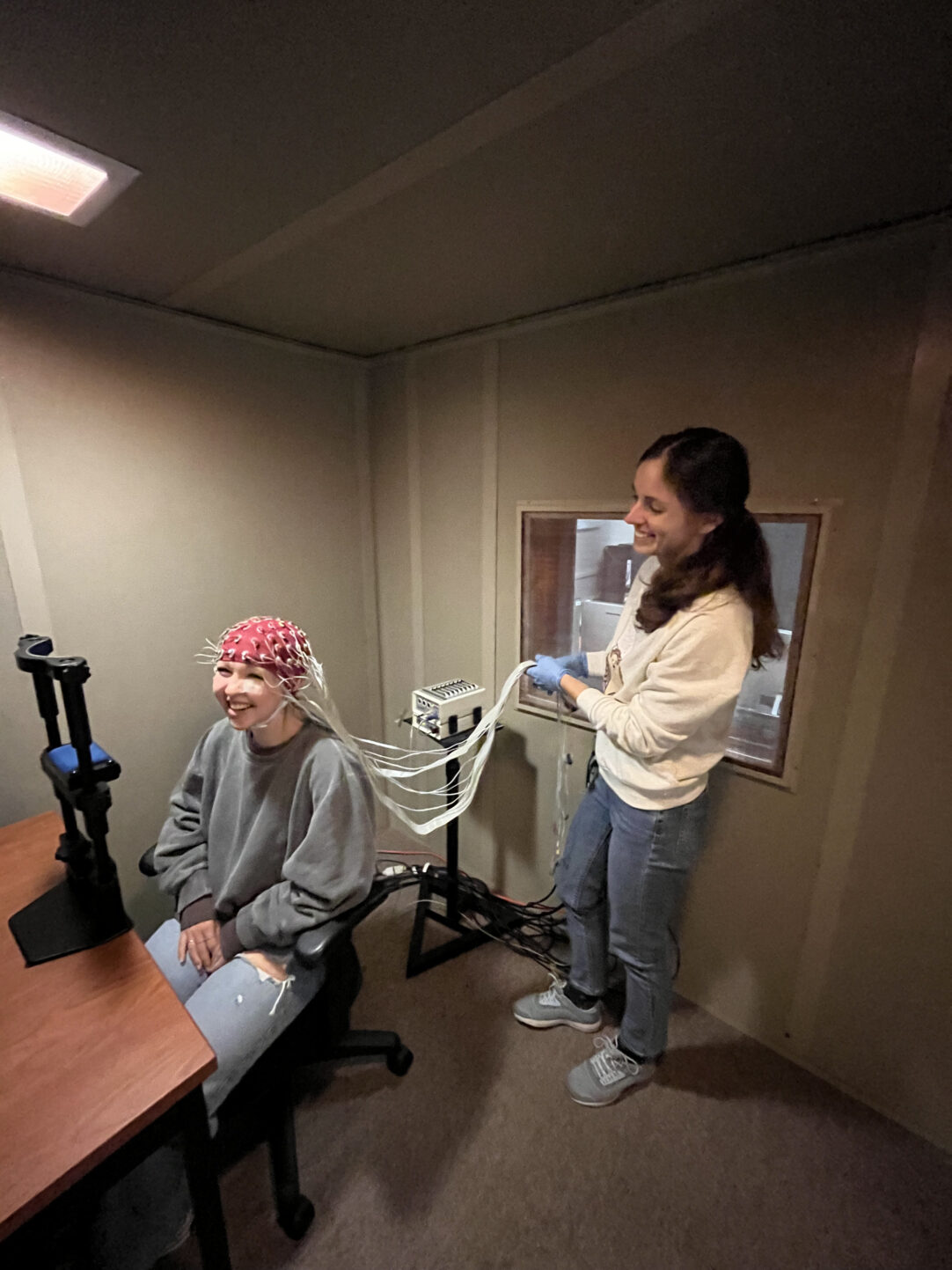
Transmission of information in the brain involves the flow of ions, which generates a voltage field around the active neurons. The EEG-technique takes advantage of the fact that when large populations of neurons are active synchronously, the generated voltage field is large enough to be picked up by electrodes placed on the scalp. The trace of voltage fluctuations across time is known as the electroencephalogram (EEG). From the electroencephalogram, event-related brain potentials (ERPs) can be extracted. An ERP-waveform reflects the brain’s activity time locked to an external event, such as stimulus presentation. As the brain’s response to an external event (5-10 mV) is considerably smaller in amplitude than the background EEG (50-100 mV), the ERP must be extracted from the ‘noise’ by an averaging procedure: the brain’s responses to repeated presentations of similar stimuli need to be recorded and averaged. The voltage fluctuations that are not associated with the processing of the stimuli will be random with respect to the stimulus onset and will therefore cancel each other. The resulting ERP-waveform purely reflects the electrical activity in the brain that is associated with the processing of the stimuli. In our investigations, ERPs will be analyzed in terms of polarity and latency (from stimulus onset) of their peaks, and relative amplitude across a number of scalp locations. The excellent time-resolution of this technique will provide us with information on the very early components of stimulus processing (preceding any overt behavioral response), information that is not accessible when using more conventional research methods like reaction time experiments.
The data collection proceeds as follows. An elastic cap containing a number of electrodes is placed on the participant’s head. Additional electrodes are placed around the participant’s eyes to monitor for blinks and/or eye movements. An electro-conducive gel is inserted between the electrodes and the skin in order to obtain an optimal signal-to-noise ratio. The voltage picked up at every recording electrode is the difference in electrical potential between that electrode and an inactive reference electrode which is placed at a neutral location, that is, a location where no neural activity can be picked up (e.g., the earlobe or the mastoid). Since this voltage is extremely small, the signal is amplified before being sampled and stored in a computer.
